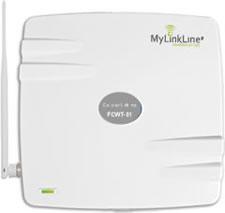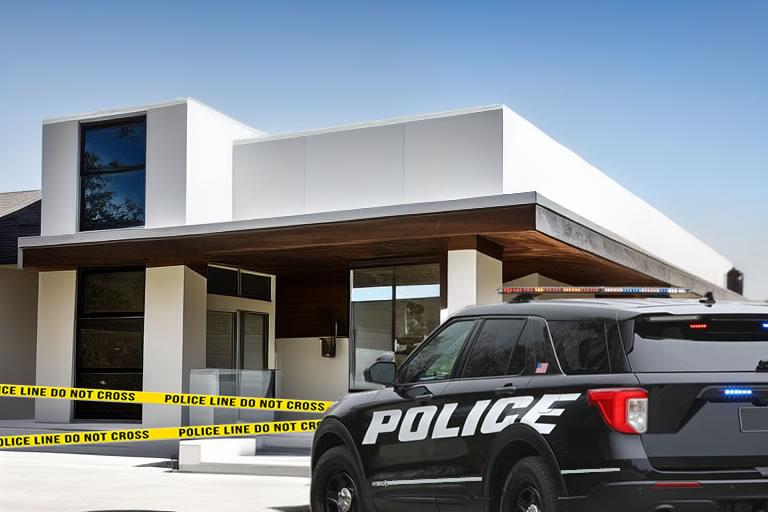Top 10 Apartment Security Solutions: Enhance Your Safety
Discover the ultimate in apartment security with our Top 10 solutions. Safeguard your space effectively and enjoy peace of mind. Explore now.
Property management is a multifaceted role that extends beyond rent collection and maintenance. One of the most critical responsibilities is ensuring the safety, security, and well-being of building tenants. In this comprehensive guide, we will delve deep into the apartment security solutions strategies and best practices that property managers can employ to protect and enhance the lives of their residents. From creating safe environments to fostering a sense of community, we will explore each facet in detail to help property managers create a thriving and secure living environment for their tenants.
1. Creating a Safe and Secure Environment
- Implementing Access Control Systems
- Enhancing Lighting and Surveillance
- Conducting Regular Security Audits
- Building Trust Through Visible Security Measures
In the pursuit of safeguarding building tenants, property managers play a pivotal role in creating apartment security solutions for a safe and secure living environment. Access control systems, such as keyless entry and intercoms, provide an added layer of security by allowing only authorized individuals into the premises. Furthermore, well-lit common areas and strategically placed surveillance cameras help deter potential threats, ensuring that tenants feel safe even during nighttime hours. Regular security audits, conducted in collaboration with security experts, ensure that the apartment security solutions remain up-to-date and effective.
2. Emergency Preparedness and Response
- Developing Comprehensive Emergency Plans
- Ensuring Adequate Training and Drills
- Establishing Effective Communication Protocols
- Real-Time Communication During Emergencies
Emergency preparedness is a cornerstone of tenant safety. Property managers should craft detailed emergency plans that cover a range of scenarios, from natural disasters to medical emergencies. Regular training sessions and drills equip both tenants and staff with the knowledge and confidence to respond effectively during critical situations. Establishing clear communication protocols, including real-time updates through text messages or dedicated apps, ensures that information reaches all stakeholders promptly, minimizing confusion and facilitating coordinated responses.
Cost Saving Tip: Enhance Safety, Cut Costs: Upgrading Emergency Communication
If your property has elevators, blue phones, or areas of refuse, it’s time to switch to cellular phone lines for enhanced reliability. Traditional landlines are becoming obsolete, while cellular elevator phone lines ensure constant communication with monitoring services. Elevator companies recommend cellular lines due to their dependability, especially during power outages and disasters. Make the change for increased reliability, cost savings, and improved communication.

3. Proactive Maintenance and Repairs
- Regular Building Inspections and Upkeep
- Addressing Maintenance Requests Promptly
- Fire Safety System Maintenance
- Predictive Maintenance for Long-Term Safety
Maintenance isn’t solely about aesthetics; it’s a crucial aspect of tenant safety. Regular inspections, coupled with prompt addressing of maintenance requests, contribute to a well-maintained building. This approach extends to fire safety systems, where routine checks and maintenance of fire alarms, extinguishers, and sprinklers are imperative. Property managers can embrace apartment security solutions such as predictive maintenance technologies, such as IoT sensors, to anticipate potential issues and address them before they escalate, ensuring the long-term safety and comfort of tenants.
4. Health and Hygiene Standards
- Waste Management and Recycling Programs
- Pest Control and Preventive Measures
- Maintaining Clean and Sanitary Common Areas
- Promoting Tenant Health and Well-Being
Developing effective apartment security solutions will create a healthy living environment goes hand in hand with safety. Property managers should implement efficient waste management and recycling programs to maintain cleanliness and minimize health risks. Regular pest control measures, coupled with preventive actions such as sealing cracks and gaps, prevent infestations that could compromise tenant well-being. Moreover, meticulous cleaning of common areas, including lobbies and shared spaces, contributes to a pleasant and hygienic living atmosphere.
5. Tenant Selection and Vetting
- Stringent Screening Processes
- Background Checks and References
- Tenant Education and Orientation
- Curating a Cohesive Tenant Community
The foundation of a secure community is formed by selecting the right tenants. Property managers should implement stringent screening processes that include comprehensive background checks and thorough reference verifications. Beyond financial stability, considering factors like compatibility with the building’s environment fosters a cohesive and harmonious tenant community. Moreover, tenant education and orientation sessions ensure that residents are well-informed about building policies, safety procedures, and emergency protocols, creating a sense of responsibility and unity.
6. Building a Sense of Community
- Organizing Community Events and Activities
- Fostering Relationships Among Tenants
- Creating a Welcoming and Inclusive Atmosphere
- Transforming Tenants into a Supportive Community
Apartment security solutions and safety extends beyond physical measures; it also encompasses a sense of belonging. Property managers can create a vibrant community by organizing events, workshops, and social activities that encourage tenant interaction and foster friendships. A diverse range of activities, from yoga classes to book clubs, not only promote a sense of belonging but also facilitate the exchange of safety tips and information among tenants. This interconnectedness forms a protective web, where tenants look out for one another, enhancing overall security.
7. Effective Communication Channels
- Open Lines for Feedback and Concerns
- Timely Updates on Building Policies
- Utilizing Technology for Tenant Communication
- Transparent Communication for Enhanced Trust
Communication is the backbone of tenant satisfaction and safety. Property managers should establish open lines for tenants to voice concerns, offer feedback, and report potential security issues. Timely communication about building policies, maintenance schedules, and updates builds transparency and fosters trust. Embracing technology, such as dedicated communication platforms or apps, facilitates instant information dissemination, allowing tenants to stay informed and engaged in matters concerning their safety.
8. Conflict Resolution and Complaint Management
- Establishing Fair Dispute Resolution Procedures
- Addressing Tenant Concerns Professionally
- Promoting Harmonious Living
- Mediating Conflicts for Lasting Peace
Conflicts are inevitable in communal living spaces, but how they are managed significantly impacts tenant safety and satisfaction. Property managers should establish apartment security solutions that are fair and transparent procedures for conflict resolution, ensuring that issues are addressed promptly and professionally. Timely intervention, coupled with effective mediation and communication, promotes harmonious living and prevents minor disputes from escalating into larger concerns that could compromise tenant well-being.
9. Accessibility and Inclusivity
- ADA Compliance and Accessibility Upgrades
- Catering to Diverse Tenant Needs
- Ensuring Equal Access to Amenities
- Inclusivity as a Pillar of Safety
- ADA Elevator Requirements
Safety encompasses all tenants, regardless of their abilities or needs. Property managers must ensure that the building is fully accessible and compliant with the Americans with Disabilities Act (ADA). This includes physical modifications such as ramps and elevators, as well as digital accommodations like accessible websites and communication channels. By actively addressing diverse tenant needs, property managers create an inclusive environment where every individual feels safe and valued.

For public buildings with elevators, compliance is key. Elevators must be easily accessible, measuring a minimum of 51″ deep X 68″ wide to accommodate wheelchairs and allow turning. Doors must be at least 36″ wide, staying open for 3 seconds upon a call, and equipped with a reopening mechanism. Elevator phones must also be monitored 24 hours a day and not require voice communication.
10. Harnessing Technology for Tenant Safety
- Smart Building Security Systems
- Digital Access Control and Monitoring
- Online Maintenance Requests and Updates
- Embracing Technological Advancements for Enhanced Security
Technology has revolutionized safety measures, providing innovative tools that property managers can utilize to safeguard tenants. Smart apartment security solutions integrate surveillance cameras, access control, and intrusion detection, allowing property managers to monitor and respond to potential security threats in real-time. Digital access control not only enhances security but also streamlines tenant entry and exit, providing a seamless and secure experience. Online maintenance request systems ensure that tenants can easily report safety concerns or maintenance issues, promoting swift resolutions and contributing to overall tenant satisfaction.
Apartment Security Solutions Final Thoughts
Safeguarding building tenants is a multifaceted endeavor that requires a proactive and holistic approach. Property managers serve as the guardians of tenant safety, employing a range of strategies from implementing advanced security systems to fostering a sense of community. By embracing each facet of this comprehensive guide.

